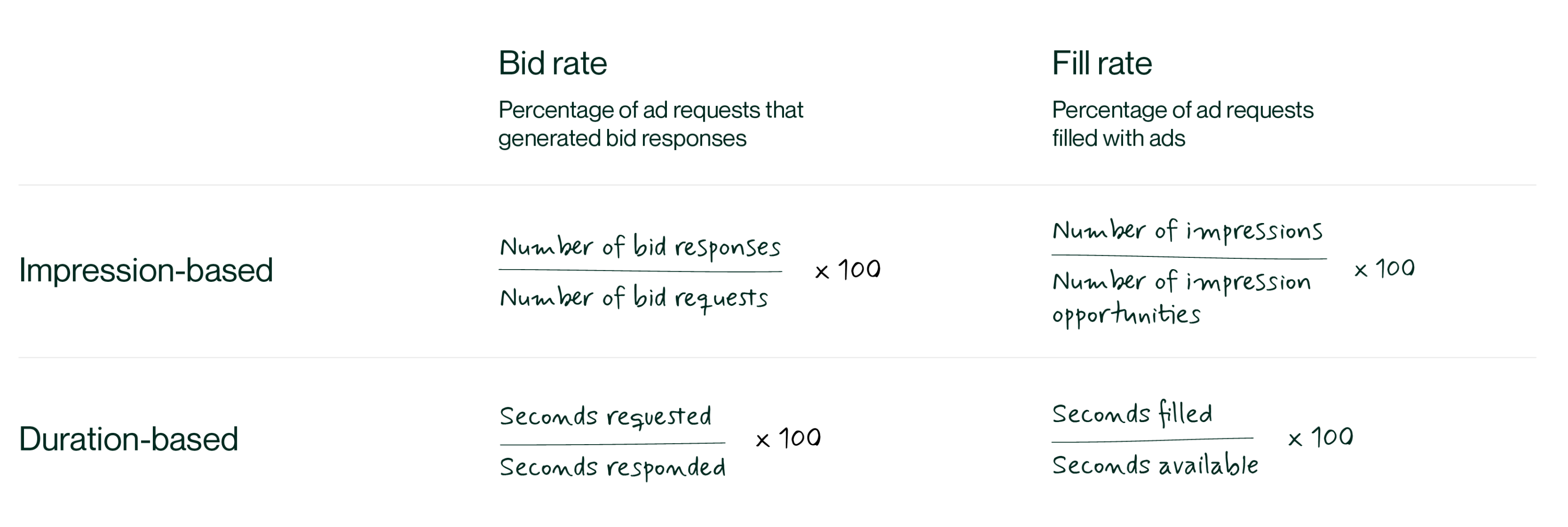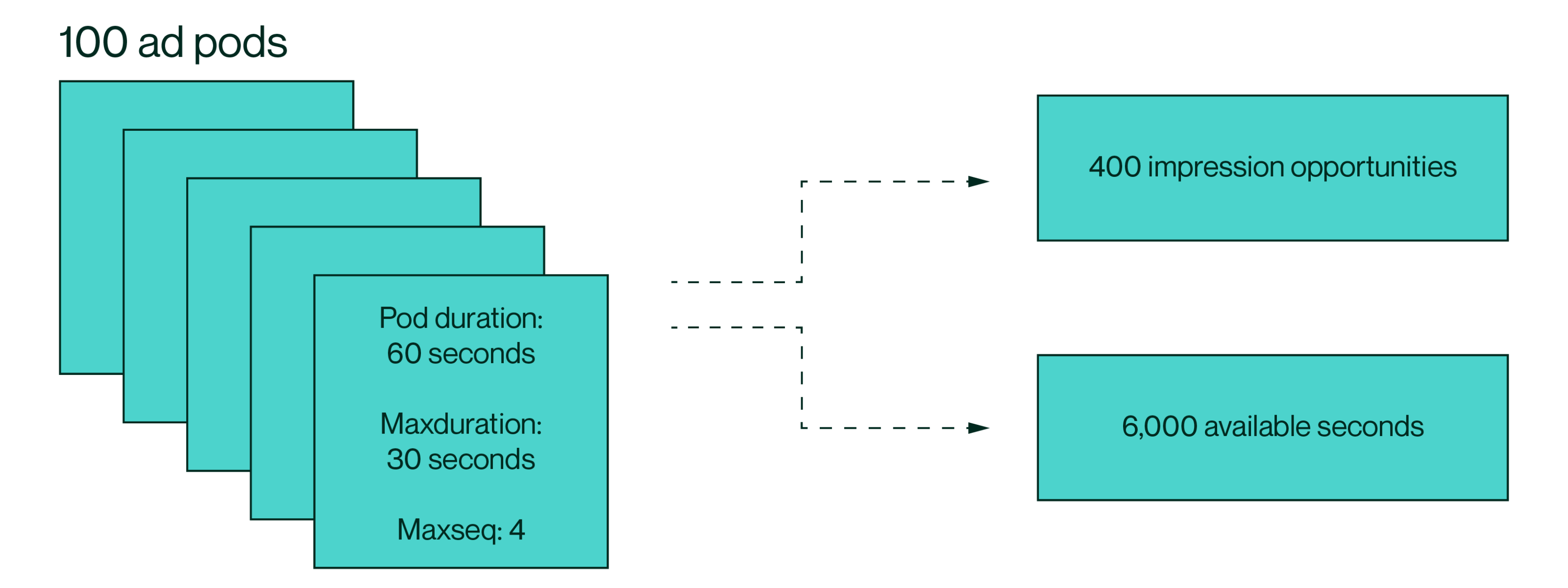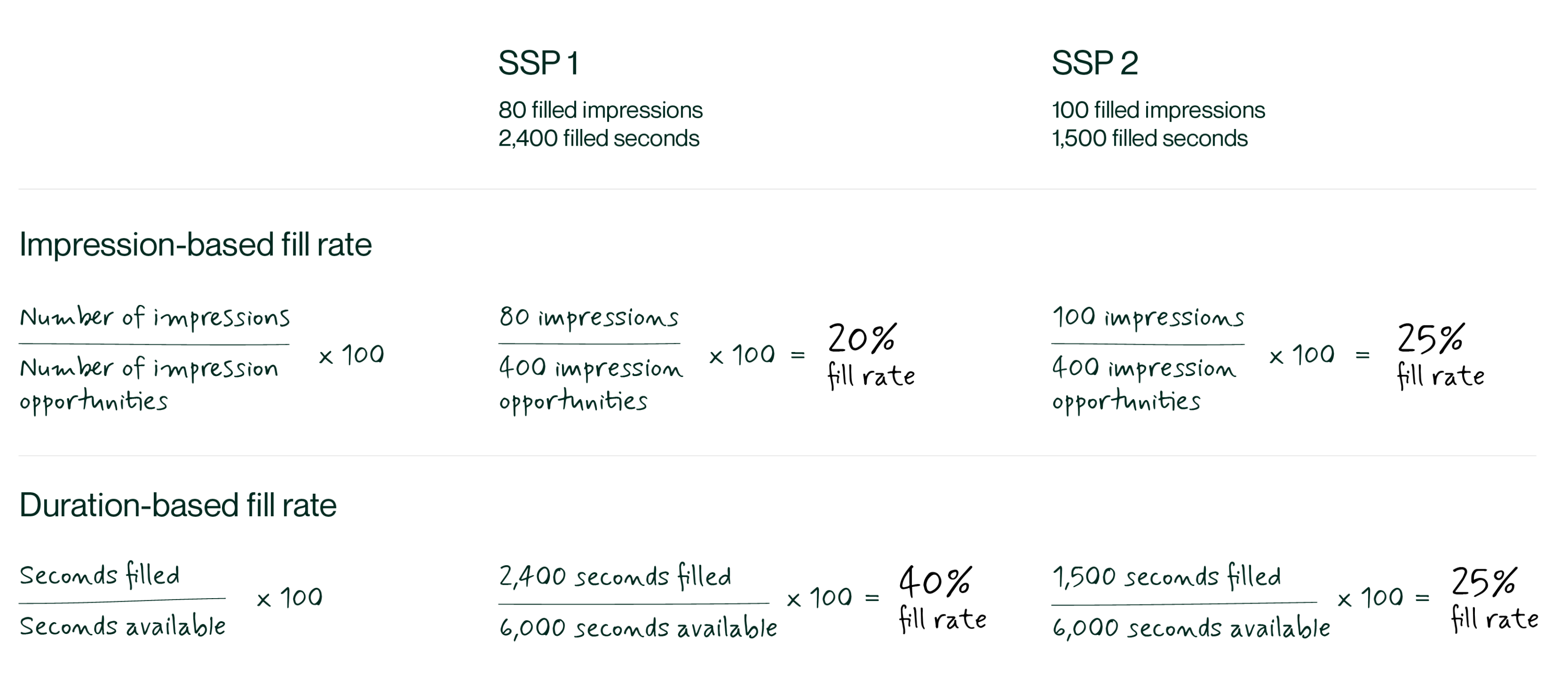The programmatic ecosystem has innovated quickly to improve ad performance in streaming TV. OpenRTB 2.6 brought standardisation to streaming and introduced a range of features to address specific needs for TV—one of the most notable being support for dynamic ad pod bidding.
We’ve seen adoption of pod bidding grow as it provides streaming TV publishers with more control over the monetisation and construction of their ad pods, improves targeting and measurement for media buyers, and boosts efficiency and sustainability for all parties.
Yet, as an industry, we’re still measuring streaming TV performance using a legacy approach that relies solely on impression-based performance metrics developed for the programmatic display market.
TV introduces another paradigm to programmatic beyond impressions or slot counts: time. To accurately understand the effectiveness of dynamic ad pods and provide buyers with a true understanding of performance, we need to incorporate duration-based measurement.
Not all dynamic ad pod slots are valued equally
As OpenRTB 2.6 adoption grows, we’ve seen supply shift to dynamic ad pods, which enable a flexible number of ad slots and slot lengths within a pod, all sent via a single bid request.

This means one 90-second ad break could have a mix of two 15- and one 60-second slots, three 30-second slots, a single 90-second slot, or some other combination.
Dynamic ad pods provide more flexibility to both media owners and buyers, but it’s important to realise that because of the time variable, not all impression opportunities are of equal value. For example, a 30-second impression opportunity carries significantly more value than a 6-second one.
So, to accurately measure streaming TV performance, we not only need to count the impression opportunities within a bid request for any given ad pod, but also need to account for the total duration.
Where legacy metrics fall short in measuring streaming TV performance
Programmatic KPIs—such as bid rate, fill rate, and win rate—were developed with standalone display ads in mind, where each impression is measured individually.
We’ve applied this to streaming TV performance, measuring based on the number of impressions or slots without factoring in the varying lengths of those slots. Essentially, this method treats a 6-second ad the same as a 30-second one and overlooks the time a viewer engages with an ad.
As a result, impression counts can give streaming publishers an incomplete or misleading view of inventory performance and hinder buyers from fully optimising their programmatic streaming budgets.
What’s the solution?
We should start accounting for duration and think in seconds, not just impression opportunity counts. Calculating these KPIs using the total duration of ad placements will provide both media owners and buyers with a full picture of performance. Here’s the calculation logic we can use for duration-based measurement:

Duration-based measurement in action: an example
To illustrate the gap between these two measurement methods, let’s look at an example of a streaming TV publisher who’s evaluating performance using fill rate. In this case, the publisher has 100 ad pods available, each with a 60-second duration, 30-second maxduration (maximum length of video ads allowed), and a maxseq of four (maximum number of ads allowed for the pod).
First, let’s calculate the total available impressions and duration:
- To estimate availability based on impression counts, we typically calculate the maximum available slots using this formula: [total number of pods] x [maxseq]. The 100 ad pods with maxseq of four represent 400 total impression opportunities.
- For duration-based availability, the 100 ad pods at 60 seconds each represent 6,000 total seconds available.

Let’s now compare the performance of two of the publisher’s SSP partners using count- and duration-based measurement:
- SSP 1 won 80 bids, each with 30-second durations (2,400 total seconds).
- SSP 2 won 100 bids, each with 15-second durations (1,500 total seconds).
Here’s how fill rates would compare across the two SSPs:

As you can see, as SSP 2 filled a higher number of impressions, its fill rate would appear to outperform SSP 1 when we apply the count-based calculation.
However, SSP 1 filled more seconds of total ad time, thus monetising a higher proportion of the publisher’s available inventory. Calculating the fill rates based on duration shows this higher impact in filling ad breaks and provides a more accurate picture of performance in this case.
A better understanding of streaming TV performance
To gain a complete picture, it’s essential to consider duration-based metrics. Count-based metrics alone can’t fully capture the performance of streaming TV ad serving and may sometimes produce skewed results, as shown in the example above.
Duration-based measurement will provide a more accurate reflection of success, enabling better decision-making and leading to more effective monetisation strategies that maximise inventory value. It also provides marketers and DSPs with a clearer picture of performance and pricing by ad duration, unlocking new opportunities to test and optimise bidding strategies.
“As the role of streaming TV continues to evolve, marketers have a unique opportunity to create more impactful ad experiences and drive online conversions using advanced signals, like pod bidding and duration-based measurement. Together with Index, Adobe Advertising is helping brands maximise their digital investment by going beyond media metrics to optimise and measure better performance outcomes.”
Ana Kilambi, Director of GTM Strategy and Operations
Adobe Advertising
We’re continuing to work to advance programmatic streaming TV and will be adding duration-based measurement at Index as well. The enhanced duration-based reports that we’re building will provide further insights and actionable data to fully assess ad inventory and campaign performance in streaming TV.
Stay tuned for updates, and in the meantime, don’t hesitate to contact our team for guidance or with any questions.
Learn more about how you can realise the full potential of streaming TV with Index.
Back to blog



